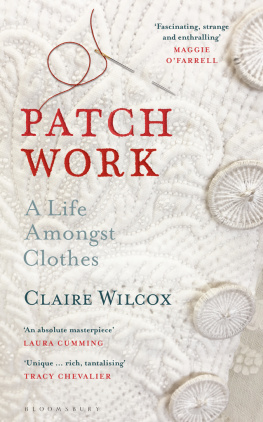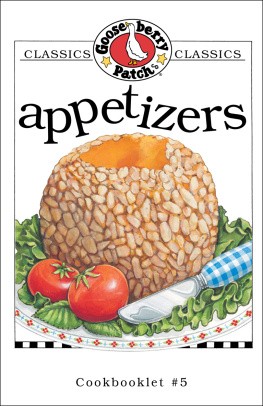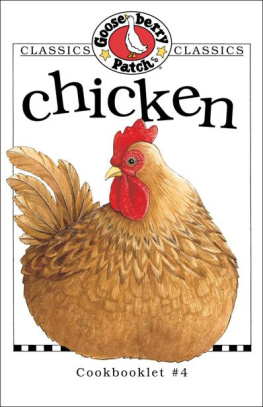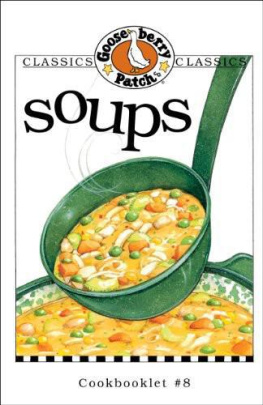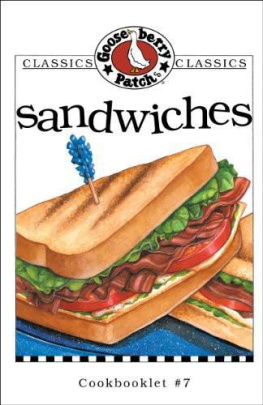Claire Wilcox - Patch Work
Here you can read online Claire Wilcox - Patch Work full text of the book (entire story) in english for free. Download pdf and epub, get meaning, cover and reviews about this ebook. year: 2020, publisher: Bloomsbury Publishing, genre: Non-fiction. Description of the work, (preface) as well as reviews are available. Best literature library LitArk.com created for fans of good reading and offers a wide selection of genres:
Romance novel
Science fiction
Adventure
Detective
Science
History
Home and family
Prose
Art
Politics
Computer
Non-fiction
Religion
Business
Children
Humor
Choose a favorite category and find really read worthwhile books. Enjoy immersion in the world of imagination, feel the emotions of the characters or learn something new for yourself, make an fascinating discovery.
- Book:Patch Work
- Author:
- Publisher:Bloomsbury Publishing
- Genre:
- Year:2020
- Rating:3 / 5
- Favourites:Add to favourites
- Your mark:
- 60
- 1
- 2
- 3
- 4
- 5
Patch Work: summary, description and annotation
We offer to read an annotation, description, summary or preface (depends on what the author of the book "Patch Work" wrote himself). If you haven't found the necessary information about the book — write in the comments, we will try to find it.
Patch Work — read online for free the complete book (whole text) full work
Below is the text of the book, divided by pages. System saving the place of the last page read, allows you to conveniently read the book "Patch Work" online for free, without having to search again every time where you left off. Put a bookmark, and you can go to the page where you finished reading at any time.
Font size:
Interval:
Bookmark:


BLOOMSBURY PUBLISHING
Bloomsbury Publishing Plc
50 Bedford Square, London, WC1B 3DP, UK
This electronic edition published in 2020 by Bloomsbury Publishing Plc
BLOOMSBURY, BLOOMSBURY PUBLISHING and the Diana logo are trademarks of Bloomsbury Publishing Plc
First published in Great Britain 2020
Copyright Claire Wilcox, 2020
Claire Wilcox has asserted her right under the Copyright, Designs and Patents Act, 1988, to be identified as Author of this work
Extract from The force that through the green fuse drives the flower by Dylan Thomas granted with kind permission of David Higham Associates Extract from Search Party by Richard Meier granted with permission of Pan Macmillan
All rights reserved
You may not copy, distribute, transmit, reproduce or otherwise make available this publication (or any part of it) in any form, or by any means (including without limitation electronic, digital, optical, mechanical, photocopying, printing, recording or otherwise), without the prior written permission of the publisher. Any person who does any unauthorised act in relation to this publication may be liable to criminal prosecution and civil claims for damages.
Cover image captured from the V&A collection
A catalogue record for this book is available from the British Library
ISBN: 978-1-5266-1439-1 (HB)
ISBN: 978-1-5266-1441-4 (PB)
ISBN: 978-1-5266-1438-4 (eBook)
To find out more about our authors and their books please visit www.bloomsbury.com where you will find extracts, author interviews and details of forthcoming events, and to be the first to hear about latest releases and special offers, sign up for our newsletters.
CONTENTS
One PRELUDE
KID GLOVES
In the dim storeroom we laid the dresses on beds of tissue and placed them in shallow wooden drawers. The drawers sat inside mahogany cupboards that reached up to the ceiling; each had a metal holder and card identifying it by number. There were hundreds. Some of the doors were warped, and we had to lean in hard to close them. The locks were old-fashioned too and we were forever dropping the heavy brass keys onto the tiled floor as we fumbled trying to turn them in their fixtures. The museum was not built for storage, but for the display of exhibits from the Great Exhibition of the Works of Industry of All Nations in 1851. Its fashion included ribbons from Coventry, silks from Lyons, footwear from Nottingham and shawls from India. Ever since then, the museum has accrued and garnered, harvested and gleaned, its walls creaking and straining with the mass of history.
Clutter has built up on the tables. We try to keep them clear in order to perform inspections of the curatorial kind. We draw out the velvet wings of an opera cloak bought from Liberty & Co. over a century ago. We spread out a lace veil, slowly disentangling its soft barbs, and cautiously unfurl a parasol, releasing a faint puff of perfume. We are fighting for space with stacks of trays full of objects waiting to be studied, or photographed, or put on display. A framed medieval chasuble leans against the table, draped with white tissue paper like a badly wrapped present. It was put there several years ago, until somewhere better could be found. We will get around to moving it one day.
We were choosing dresses and accessories for the permanent display. Permanent and temporary are words we use to describe gallery displays and exhibitions, although rarely in their true sense. Permanent can mean anything from a decade to a lifetime, while temporary, in museum time, often goes on for years. When we acquire, we say it is in perpetuity, like a sacred bond between building and object, holder and held. So it is on one level. Sorted, categorised, catalogued, numbered, the collective collections represent the gathering together of excellence; of history, taste and skill. We are caring for high-quality detritus of the past in order to understand who we are.
We employ the term objects because it covers everything, large or small, modest or spectacular, and because it is distant and professional; respectful. We treat the objects with kid gloves, avoiding sudden movement, and think through the steps we take from cupboard to table as, for example, we airlift a massive crinoline weak with age. We settle its folds, form rolls of tissue to support its boned struts, and pass our hands over the creases like mediums intent on resurrecting the dead. We make our notes in pencil (pens are forbidden), observing every detail, counting every button, notating every anomaly, inside and out. It is called a condition report.
Our language is frequently of devastation and disintegration. We talk of shattered silks when the brittle fabric splits, often down an old crease; fugitive dyes that have faded through time, leaving behind a curiously unbalanced palette where blues become green and reds become brown. We notice signs of erosion, where a fabric has rubbed against a stronger element such as a metal buckle, and isolate perished objects that reek of chemical degradation (we have a collection of mackintoshes with rigor mortis). We remove tired pieces from display, speaking of their need to rest. We undertake emergency measures against infestation (moth, carpet beetle and woolly bear), rush to the museum from our beds in the event of flood and enclose our objects in glass cabinets against malicious damage and theft, bright light and heat, damp and sudden chills.
Today, we are looking at printed cotton dresses from the 1830s. They are charming the tiny patterns scattered over the fabric giving unity to the complex anatomy of the garment. The necklines are wide. For day, a soft cotton fichu would hide shoulder tip and collarbone, but for evening, such an unveiling of flesh would be perfectly acceptable. A whole infrastructure once held things in place. Puffed sleeves were held proud by down-filled pads tied onto the upper arm; full skirts were supported by ribbed and pleated petticoats, and a coiffure was laboriously bulked up with coils of others hair. To provide a convincing display, we group things that have never been grouped, create a unified ensemble from clothes that have had multiple owners. We hold things up for scrutiny, try them out on a dressmakers form. We become distracted by a never-worn green dress that we think might be a maternity gown.
We are composing a display case in our minds. We know how many mannequins it will take (three) and that we will have a number of tables at the front for smaller things a straw bonnet, some fashion plates, a purse, a pair of kid gloves satellites to the real stars of the show. We look inside the bags, although know theyll be empty; bags are such a mystery, they always arrive in the museum cleared out, as if absolved of personality. We are composing labels in our mind as we regard the objects, and offer up thoughts for consideration, saying, perhaps if we put this with this Our curators hands are there not just to handle and hold, but to gain tacit knowledge of our objects, to feel their history through stitch and thread.
We have decided to arrange the display chronologically. But it will always be a three-dimensional puzzle with the majority of pieces missing. We know that for each fretted, painted and beribboned fan in our possession, a million will have been lost, as they swirled around house clearances, vintage stores and salerooms, with only the best and rarest finding refuge in the museum, like exhausted migratory birds. Sadly, our fans wont be fluttered again, nor will a swelling belly fill the green dress. Corsets wont be strained to the limit, nor kid gloves distended with stretchers to receive the hand of a lady. But to look on the bright side, rough hands will never wash the clothes carelessly again, scorch them with an iron, remodel them, or rip them up for rags.
Font size:
Interval:
Bookmark:
Similar books «Patch Work»
Look at similar books to Patch Work. We have selected literature similar in name and meaning in the hope of providing readers with more options to find new, interesting, not yet read works.
Discussion, reviews of the book Patch Work and just readers' own opinions. Leave your comments, write what you think about the work, its meaning or the main characters. Specify what exactly you liked and what you didn't like, and why you think so.

